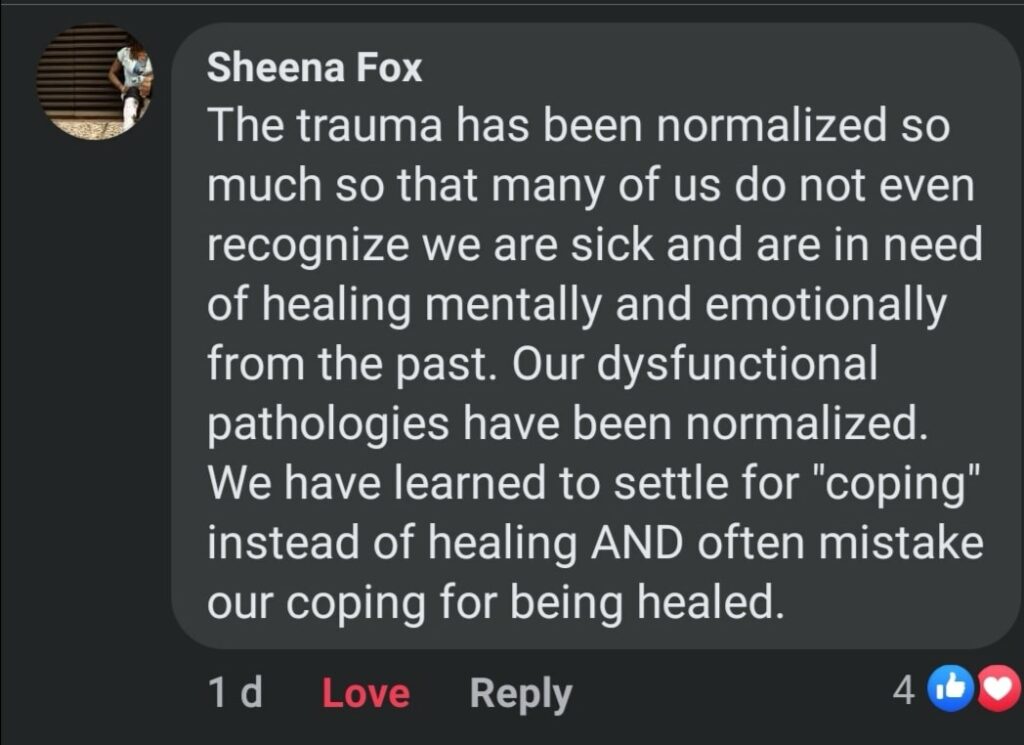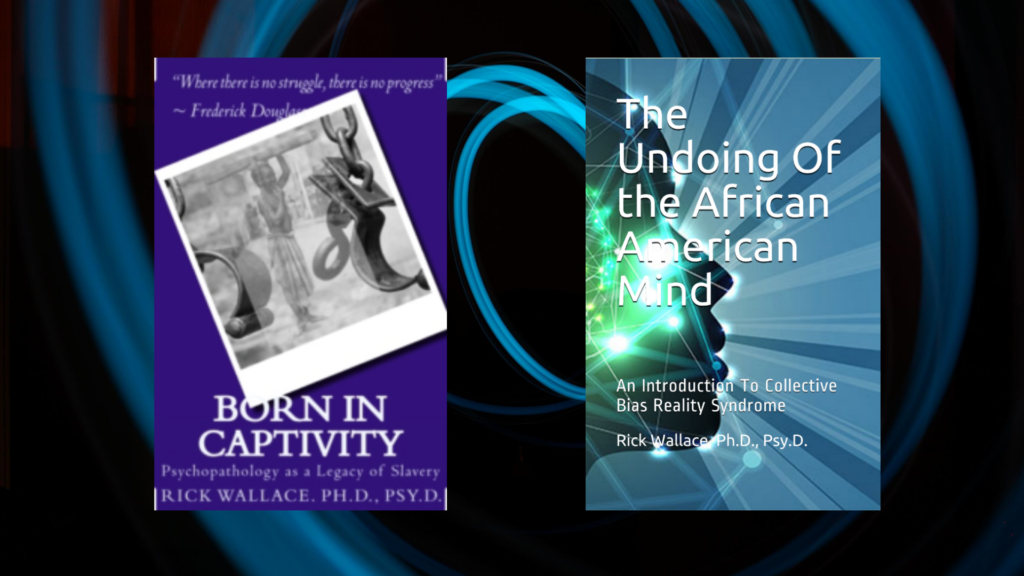by Rick Wallace, Ph.D., Psy.D. | July 2, 2021


The Normalization of Trauma and Its Long-reaching Effects
The Normalization of Trauma and Its Long-reaching Effects are more devasting than we imagine. The term “normalization” is overused and seldom understood; however, in this case, it is accurately applied. Normalization is not a simple or inconsequential dynamic. Normalization requires the shifting of norms and standards. Norms and standards are what govern our mental and emotional tolerances. It is norms and standards that establish your conscience — the part of your mental being that makes you feel bad about doing something you know you should not do.
When you normalize something, you force or reduce something into the range of your norms and standards — creating a type of conformity to something customarily considered out of place or even dysfunctional. When traumatic memory, traumatic response, and traumatic injury are normalized, trauma becomes the new standard for your life experiences.
The most significant problem with normalized trauma is that it does not alleviate the emotional, psychological, or physiological implications of trauma. Normalization of trauma simply means that you have accepted that which is unhealthy as being normal. When trauma is normalized, the person does not seek help because they don’t recognize they are sick. This is especially the case when so many others around them are also emersed in trauma.
Some symptoms of psychological trauma include:
~ Confusion, difficulty concentrating
~ Anger, irritability, mood swings
~ Shock, denial, or disbelief
~ Feeling disconnected or numb
~ Feeling sad or hopeless
~ Anxiety and fear
~ Guilt, shame, self-blame
~ and more
While the term Post-traumatic Stress Disorder (PTSD) is often used as a blanket diagnosis, it is a mental health condition usually triggered by a singular, terrifying event. Most people within the Black community are suffering from a lesser-known condition referred to as complex trauma.
While complex trauma is most commonly recognized with children and is a part of the blanket of Adverse Childhood Experiences (ACEs), if not engage through the appropriate interventions, complex trauma will manifest in behaviors and experiences of adults who were traumatized as children.
Complex trauma is described as a type of trauma that occurs repeatedly and cumulatively, usually over time — and with specific relationships and contexts. Some examples of complex trauma include domestic abuse, severe child abuse, multiple military deployments, molestation, rape, incest, and more.
Complex trauma events and experiences are stressors that are:
- Repetitive, prolonged, or cumulative
- Most often interpersonal, involving direct harm, exploitation, and maltreatment (including neglect, abandonment, or antipathy by primary caregivers or other ostensibly responsible adults)
- Often occur at developmentally vulnerable times in the victim’s life, especially in early childhood or adolescence. These events can also occur later in life in conditions of vulnerability associated with disability, disempowerment, dependency, age, infirmity, and others.
(Wallace, 2017; Firestone, 2012; Wallace, 2015)
Get your signed copy of Born in Captivity: Psychopathology as a legacy of slavery!

Over time, the normalization of trauma has led to an entire social culture where dysfunction is the accepted norm. Few seek the help they need to ensure holistic healing; they have learned to cope with their illness, and many mistake their heightened coping skills as a sign of healing and wellness.
I cannot overstate the long-term health implications of untreated trauma. Trauma has a direct correlation with the limbic system from the onset throughout life. The limbic system is made up of several parts of the brain, sometimes referred to as the reptilian brain. These parts of the brain include the amygdala, the hippocampus, the hypothalamus, the thalamus, and the nucleus accumbens.
The Amygdala
The amygdala is the part of the ancient brain that stays on alert for anything unsafe and threatens. Not only does the amygdala trigger the fight or flight response, but it also communicates the details of the threat to the hippocampus so that it will associate that particular thing, person, or environment with danger.
During the fight or flight stress response, the body releases stress hormones, including cortisol and adrenaline, into the bloodstream. As these hormones are released, the heart rate increases, blood is drawn from other vital organs, including the brain, and sent to the extremities (arms and legs) to fight the threat or run from it.
People tend not to make rational decisions when they are in “fight or flight” mode because the blood flow to the prefrontal cortex has been redirected to the extremities to facilitate physical activity. The prefrontal cortex is responsible for executive functions such as decision making, reasoning, and more.
The fight or flight response is meant to be a temporary solution to a threat; it does not function well as an ongoing response. The presence of cortisol in the bloodstream for longer than 30 minutes begins to break the body down — starting with the organs. Imagine being constantly triggered and what they could mean over multiple years, and you will begin to develop a lucid perspicacity of the impact of trauma
In trauma survivors, the amygdala can become extra-sensitive to potential threats, and it may have a more challenging time being calmed down after being triggered.[1]
The Hippocampus
The hippocampus is the part of the brain that assists in forming memories and learning new information. This part of the brain is massively impacted by stress. Studies reveal that the hippocampus of adult survivors of childhood abuse tend to be smaller. Survivors often struggle with memories and flashbacks. There are some instances where survivors have trouble retaining new information that diametrically opposes their childhood experiences. For instance, a child may resist the idea of sleep being safe and healthy if their trauma is somehow related to bedtime as a child.
The Hypothalamus
The hypothalamus is considered the gauge — the part of the brain that regulates body functions, including hunger, sexual responses, and physical reactions to stress. In trauma survivors, the feedback loop from the body to the hypothalamus can be interrupted, resulting in the survivor being caught in a constant state of stress. Being in a constant state of stress can lead to multitudinous emotional and physical health problems.
The Thalamus
The thalamus is like a relay station that sends information to different parts of the brain. When you encounter a threat, the thalamus alerts your subconscious areas of the brain before your conscious become aware of the situation. This alert is what causes you to hit the brakes on your car before you even see the threat conscious.
Trauma survivors often experience an instant reaction to situations their body has learned to associate with danger and their trauma (i.e., smells, sounds, sensations). The survivor may not recognize the trigger because it is so deeply rooted in their subconscious nature.
The Nucleus Accumbens
The nucleus accumbens is one part of the brain’s reward system; it serves as a motivator. When survivors find it hard to cope, they often resort to using certain destructive behaviors or substances that help them escape, numb, and cope with their reality.[2] When coping behavior results in addictions, they hijack the brain’s reward system, becoming destructive over time. This addiction dynamic is just one reason society must begin to see addiction as an illness and not a moral failure.
Conclusion
The normalization of trauma, especially complex trauma, has reached a point where an entire population of people have embraced dysfunctionality as normal. The need for healing is sidestepped for coping mechanisms that are often counterproductive and even dangerous. In my book, Born in Captivity: Psychopathology as a Legacy of Slavery, I highlight the dysfunctional pathology of untreated trauma. As outlined in my paper ” Collective Dominative Bias Theory, ” what is often referred to as culture is often the result of collective psychosis.
We must be willing to put in the work. The long-term implications of untreated trauma are devasting and can be passed down generationally through social learning theory and epigenetics. While the work will be tedious and taxing, it must be done. ~ Rick Wallace, Ph.D., Psy.D.
Get your signed copy of my 20th, book Critical Mass: The Phenomenon of Next-Living!

References
Dannlowski, U., Beutelmann, V., Zwanzger, P., Lenzen, T., Grotegerd, D., & Kugel, H. (2012). Limbic Scars: Long-term Consequences of Childhood Maltreatment Revealed by Functional and Structural Magnetic Resonance Imaging. Biological Psychiatry, 7(4). 286-293.
Ferguson, D. M., Mcleod, G. F., & Horwood, L. J. (2013). Childhood sexual abuse and adult developmental outcomes: Findings from a 30-year longitudinal study . New Zealand Child Abuse & Neglect, 37(9). 664-674.
Firestone, L. (2012). Recognizing Complex Trauma. Psychology Today.
Wallace, R. (2015). Collective Cognitive-bias Reality Syndrome. The Odyssey Project.
Wallace, R. (2017). Born in Captivity: Psychopathology As a Legacy of Slavery. Houston, TX: Odyssey Media Group & Publishing.
[1] (Dannlowski, et al., 2012)
[2] (Ferguson, Mcleod, & Horwood, 2013)

